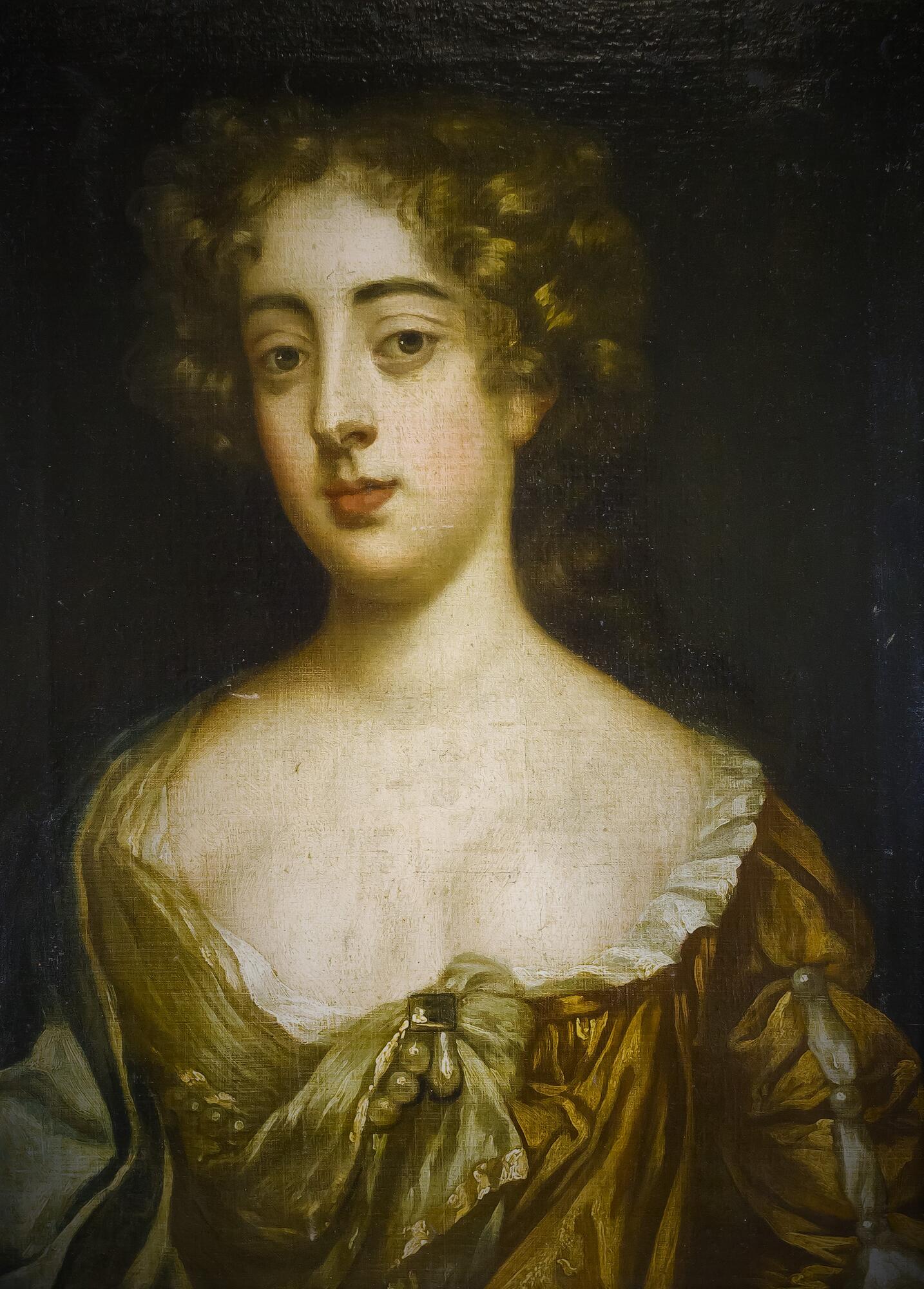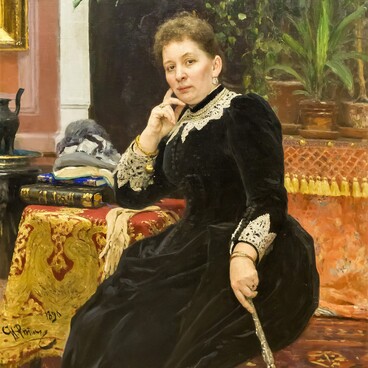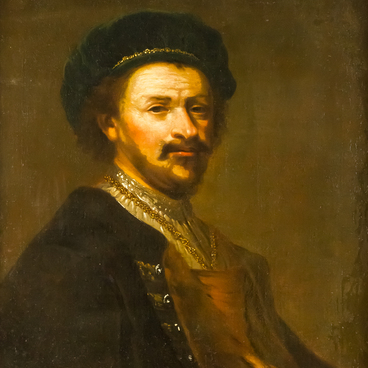‘Portrait of an Unknown Lady’ was painted by Peter Lely, the leading portraitist of the 17th century England. In 1661, Lely became the principal painter to the king. The portraits by his hand reflect the atmosphere of levity, sensuality and refined manners at the court of Charles II. That is especially so for the portraits of ladies — in their wish to resemble a new king’s favorite, they made requests that led to their likenesses being similar to each other. For that reason, quite often the women in Lely’s paintings seem to be deprived of pronounced individuality.
Peter Lely often portrayed the greatest beauties of the kingdom — stout, gentle, somewhat demure ladies dressed in shiny silk gowns. The artist had a knack for distinguishing between the slightest shades of color and was considered a true virtuoso in depicting luxurious outfits, draperies and jewelry. He painted portraits in the Baroque style, with quick and wide brush strokes.
Most likely, the ‘Portrait of an Unknown Lady’ depicts one of the court ladies. The painting resembles Lely’s many other canvases, for example, the portrait of Elizabeth Wriothesley, Countess of Northumberland, or the portrait of Aphra Behn.
Peter Lely’s real name is Pieter van der Faes. He adopted the surname ‘Lely’ from the name of his father’s house in the Hague. He came to England in the mid-1640s during the early years of the Civil War. By the 1650s, he had already built a strong reputation as a portraitist. Lely was recognized as Anthony van Dyck’s successor, who was esteemed for his court portraits and religious scenes in the Baroque style (the Baroque is distinguished by dramatic contrasts, exaggerated motion, sensuous richness and grandeur of compositions). In his early years, Peter Lely indeed drew inspiration from Anthony van Dyck’s legacy, but his portraits showed more of the Dutch solidity and revealed the model’s personality, state of mind, as well as the depth of thoughts and feelings, which was typical of Dutch portraitists.
In addition to being a painter, Lely was a collector and connoisseur of art. His collection mostly included Venitian painters — Paolo Veronese, Leandro Bassano, and Tintoretto. Lely also acquired paintings by Anthony van Dyck, Claude Lorrain, and Rubens, as well as many Dutch and Flemish landscape painters. The Duke and Duchess of York were his most regular patrons and clients.
Peter Lely often portrayed the greatest beauties of the kingdom — stout, gentle, somewhat demure ladies dressed in shiny silk gowns. The artist had a knack for distinguishing between the slightest shades of color and was considered a true virtuoso in depicting luxurious outfits, draperies and jewelry. He painted portraits in the Baroque style, with quick and wide brush strokes.
Most likely, the ‘Portrait of an Unknown Lady’ depicts one of the court ladies. The painting resembles Lely’s many other canvases, for example, the portrait of Elizabeth Wriothesley, Countess of Northumberland, or the portrait of Aphra Behn.
Peter Lely’s real name is Pieter van der Faes. He adopted the surname ‘Lely’ from the name of his father’s house in the Hague. He came to England in the mid-1640s during the early years of the Civil War. By the 1650s, he had already built a strong reputation as a portraitist. Lely was recognized as Anthony van Dyck’s successor, who was esteemed for his court portraits and religious scenes in the Baroque style (the Baroque is distinguished by dramatic contrasts, exaggerated motion, sensuous richness and grandeur of compositions). In his early years, Peter Lely indeed drew inspiration from Anthony van Dyck’s legacy, but his portraits showed more of the Dutch solidity and revealed the model’s personality, state of mind, as well as the depth of thoughts and feelings, which was typical of Dutch portraitists.
In addition to being a painter, Lely was a collector and connoisseur of art. His collection mostly included Venitian painters — Paolo Veronese, Leandro Bassano, and Tintoretto. Lely also acquired paintings by Anthony van Dyck, Claude Lorrain, and Rubens, as well as many Dutch and Flemish landscape painters. The Duke and Duchess of York were his most regular patrons and clients.



